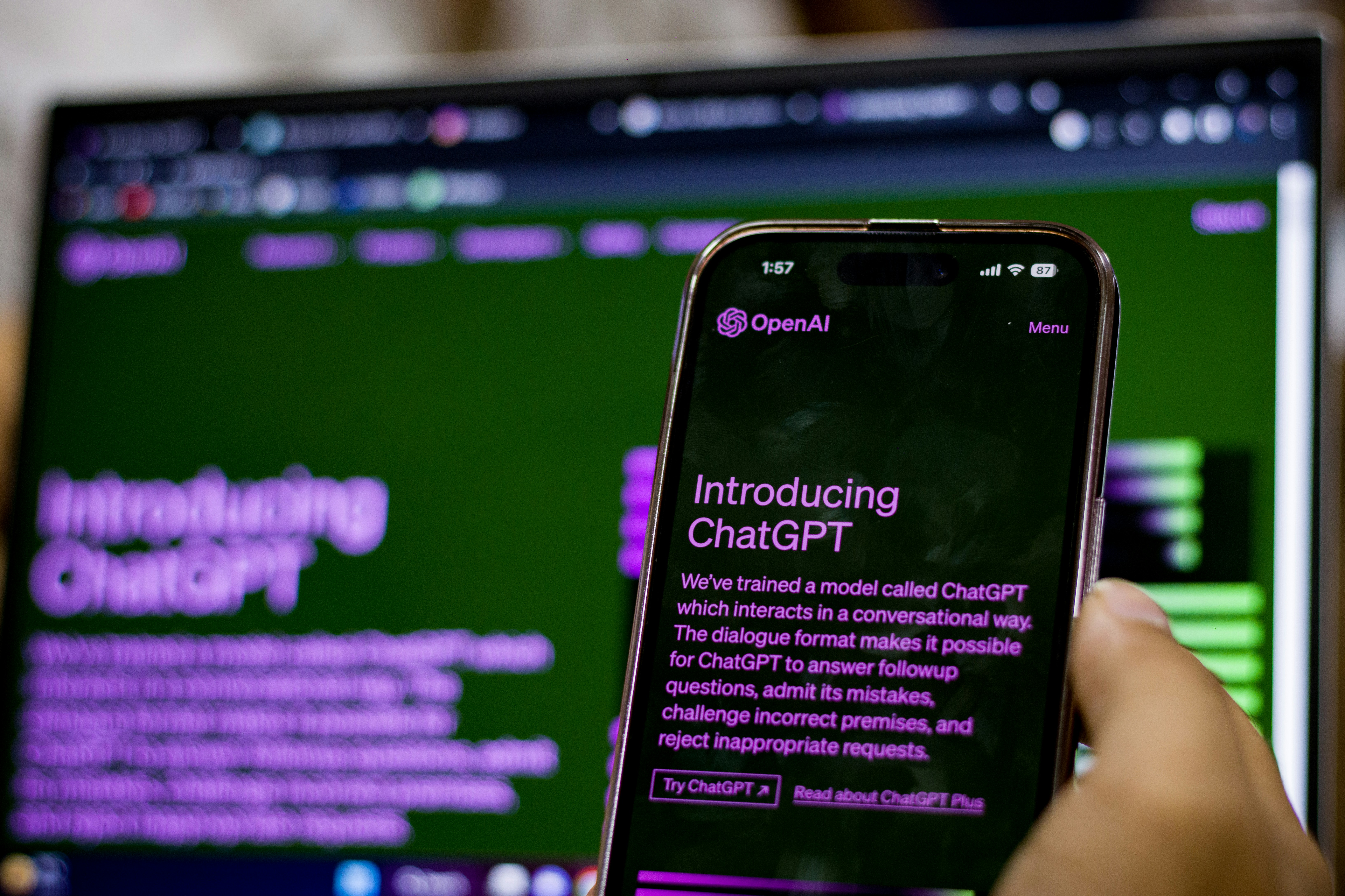
Introduction to ChatGPT in Web Development
ChatGPT, a product of advanced artificial intelligence, is revolutionizing the landscape of web development by enhancing the way both developers and non-developers approach the creation of websites. ChatGPT is fundamentally designed to understand and generate text that resembles human language based on the input it receives, making it a versatile tool for various applications, including website development. By leveraging natural language processing capabilities, ChatGPT assists users in generating content, developing web code, and simplifying complex tasks, ultimately streamlining the web development process.
The functioning of ChatGPT is based on a transformer architecture, which allows the model to predict and produce coherent responses by considering the context provided in user prompts. This provides users the ability to engage in dynamic and responsive dialogues, thereby facilitating an intuitive approach to problem-solving and creative content generation. Users can ask for help on various topics such as HTML, CSS, JavaScript, or even design suggestions, and ChatGPT is equipped to provide relevant and informative responses while adapting to the user’s level of expertise.
The increasing importance of ChatGPT in web development is due to its accessibility and efficiency. It empowers individuals with limited technical knowledge to create websites by breaking down complex programming concepts into understandable language. Moreover, its ability to assist seasoned developers with coding challenges can save time and enhance productivity. As ChatGPT continues to evolve with ongoing updates and improvements, it solidifies its position as an invaluable resource for aspiring web developers and seasoned professionals alike, opening new avenues to foster creativity and innovation in web design and development.
Setting Up Your ChatGPT Account
Creating a ChatGPT account is an essential first step for individuals interested in leveraging this advanced AI tool for website development. Begin by visiting the official ChatGPT website, where you will find the option to sign up. The registration process typically requires an email address and the creation of a strong password. Users may also have the option to sign up using existing accounts from various platforms, which can streamline the process significantly.
Once you have successfully registered, it is important to choose the appropriate plan that aligns with your needs. ChatGPT offers various subscription tiers, often ranging from a free tier, which provides basic access, to more comprehensive premium plans that unlock advanced features. Take the time to review the descriptions and benefits associated with each plan, as this will ensure that you select the one that best fits your website development goals. Consider factors such as the number of messages allowed, response times, and access to enhanced tools.
After setting up your account and selecting a plan, it is crucial to familiarize yourself with the user interface. The ChatGPT platform is designed to be intuitive; however, taking the time to explore its functionalities can significantly enhance your user experience. The main navigation typically consists of a chat area, where you input prompts, and a settings section, where you can adjust preferences and review account information. Engaging with the platform through simple queries will help you understand how to interact effectively with the AI, thus maximizing its potential for assisting you in website development tasks.
Using ChatGPT for Ideation and Planning
When embarking on the journey of building a website, the brainstorming stage is pivotal. ChatGPT serves as a valuable tool during this phase, providing users with creative insights and structured suggestions to kickstart their planning process. Utilizing tailored prompts with ChatGPT can significantly enhance ideation, uncovering potential ideas that might not have been initially considered.
To leverage ChatGPT effectively, users can begin by clearly defining their goals and objectives for the website. For example, one might prompt ChatGPT with specific questions such as, “What are some unique features I could include in an e-commerce website?” or “Can you suggest layouts that enhance user engagement for a blog?” These targeted inquiries often yield a diverse array of concepts and recommendations, ranging from design elements to functionality enhancements.
Additionally, ChatGPT can assist in generating content ideas and topics relevant to the website’s purpose. Users can ask for suggestions that resonate with their target audience, helping to shape a more tailored user experience. This level of customization is particularly beneficial for niche markets, where precise and relevant content is imperative for attracting and retaining visitors.
Moreover, ChatGPT can facilitate discussions around website navigation structures and layouts. By prompting with inquiries about best practices or popular trends in web design, users can gain insights into how to create intuitive user flows, thereby enhancing the website’s overall usability and effectiveness.
In conclusion, incorporating ChatGPT into the ideation and planning stages of website development provides a plethora of creative resources that can enrich the design process. This not only fosters innovation but also aids in ensuring that the website meets the users’ needs. By engaging with the AI effectively, individuals can unlock new possibilities and streamline their website-building journey.
Writing HTML, CSS, and JavaScript with ChatGPT
Utilizing ChatGPT for generating code snippets can significantly streamline the web development process. By leveraging the capabilities of artificial intelligence, developers can receive immediate assistance in writing HTML, CSS, and JavaScript, thereby enhancing productivity and efficiency. When starting with HTML, a straightforward approach would be to request specific code structures. For instance, you might ask ChatGPT, “Can you create a basic HTML template for a personal website?” The AI can then provide a clean and organized layout, including essential elements like the head, body, and navigation.
When it comes to CSS, feel free to ask for assistance with styling web pages. A useful command might be, “Please write CSS to style the header with a blue background and white text.” ChatGPT can generate the appropriate CSS rules, allowing you to quickly implement design changes without needing to craft every detail from scratch. This not only reduces the number of errors but also enables developers to focus on the overarching design, rather than getting bogged down in the minutiae.
Incorporating JavaScript for interactivity is another area where ChatGPT can assist effectively. You might say, “Write JavaScript to create a simple button that displays an alert when clicked.” The AI can provide a functional snippet that encapsulates the event handling, taking into account best practices for accessibility and performance. These interactions make the coding process more intuitive and can lead to a more enjoyable experience for developers who might be new to programming or those looking to expedite their workflow.
As developers incorporate ChatGPT into their toolkit, they can discover new efficiencies in generating code, testing functionalities, and iterating designs. Overall, employing ChatGPT to assist with writing HTML, CSS, and JavaScript can transform the way web developers approach projects, fostering a more collaborative and innovative environment.
Debugging and Optimizing Code with ChatGPT
In the realm of web development, debugging and optimizing code are essential tasks that can significantly influence the performance of a website. ChatGPT can be an invaluable resource for developers, need assistance with these challenges. By leveraging this AI, developers can address common coding issues that arise during the web development process, enhancing their efficiency in problem-solving.
One of the key benefits of using ChatGPT is its ability to identify potential coding errors. Developers often face situations where the code does not execute as expected. ChatGPT can help troubleshoot these problems by analyzing code snippets and providing insights into possible syntax errors, logical inconsistencies, or compatibility issues. This real-time guidance is particularly beneficial for novice developers who may struggle to pinpoint the source of their errors.
In addition to troubleshooting, ChatGPT offers useful suggestions for optimizing code. Code optimization involves refining code to improve its performance, enhance speed, and reduce resource consumption. ChatGPT can recommend best practices such as minimizing redundant code, employing efficient algorithms, and utilizing built-in functions effectively. By incorporating these suggestions, developers can streamline their code and ensure their website operates smoothly under various conditions.
Moreover, ChatGPT can assist in enhancing the performance of a website beyond code optimization. It can suggest tactics for improving loading times, such as image compression, lazy loading, and efficient caching strategies. By adopting the recommendations provided by ChatGPT, developers can craft responsive and user-friendly websites.
In conclusion, utilizing ChatGPT for debugging and optimizing code can be a significant asset for developers. Its capacity to troubleshoot common coding issues and provide optimization strategies enhances the overall quality of web projects. By integrating ChatGPT into their coding practices, developers can not only correct their errors but also develop more efficient, high-performance websites.
Content Creation for Your Website
Generating content for your website is a critical aspect of establishing an online presence. ChatGPT can be an invaluable tool for users looking to create diverse content types, including blog posts, landing pages, and product descriptions. Leveraging this AI model involves understanding how to craft effective prompts that yield meaningful and relevant outputs.
To get the most out of ChatGPT for content creation, start by clearly defining the purpose of your content. For instance, if you are creating a blog post, it is essential to outline the topic, desired tone, and key points that need to be included. This foundation allows ChatGPT to generate text that aligns closely with your expectations. Utilizing specific prompts such as, “Generate a 300-word blog post on the benefits of sustainable living,” can significantly enhance the relevance of the responses.
When crafting prompts, it is beneficial to include examples or specific details that can guide the generation process. This approach helps maintain coherence and also enhances the overall quality of the content. For instance, if you need product descriptions, stating the product’s features, target audience, and unique selling points will assist ChatGPT in creating personalized and engaging content.
Additionally, employing a revision strategy is essential when utilizing AI-generated content. After receiving the text from ChatGPT, reviewing and editing for clarity, tone, and accuracy ensures that the final output meets your web standards. This iterative process may also involve merging different AI-generated segments, allowing for a more customized narrative that resonates with your audience. Overall, with careful prompt crafting and thoughtful editing, ChatGPT can serve as a powerful ally in your content creation efforts.
Design Considerations and User Experience
When it comes to website creation, design choices significantly impact user engagement and satisfaction. Incorporating AI tools like ChatGPT can streamline the process of making informed design selections. One aspect of web design that demands attention is the layout. A well-structured layout guides users intuitively through the content, making it easier for them to locate the information they seek. Utilizing ChatGPT can aid in generating layout options that are user-friendly and aesthetically pleasing, ensuring that users remain engaged with the site.
Furthermore, color schemes play a crucial role in influencing user perception and behavior. The choice of colors can evoke specific emotions and reactions, which are essential for branding and navigation. ChatGPT can assist in curating color palettes that not only align with brand identity but also enhance usability. By analyzing color theories and psychological implications, the AI can recommend combinations that foster a positive user experience, thereby increasing the likelihood of retention and interaction.
In addition to layout and color, applying core user experience (UX) principles is vital for any successful website. These principles include maintaining consistency, ensuring responsive design, and optimizing loading speeds. ChatGPT can provide insights on these aspects by analyzing current industry standards and trends, helping designers make choices that conform to user expectations. Moreover, it can facilitate A/B testing suggestions, allowing for data-driven decisions regarding elements such as button placements and text readability.
By utilizing AI support in these areas, designers can create websites that are not only visually appealing but also highly functional, ultimately enhancing overall user engagement.
Limitations of Using ChatGPT in Web Development
While ChatGPT serves as a valuable resource in the domain of web development, it is imperative to acknowledge its inherent limitations. One significant drawback is the potential for inaccuracies in the generated code. The model operates based on patterns and examples from its training data but does not possess an understanding of programming languages at a deep or operational level. Consequently, developers may encounter issues where the provided code snippets do not function as expected, or worse, introduce bugs that undermine the website’s functionality.
Another notable limitation is the absence of real-world testing capabilities. ChatGPT lacks the ability to execute code or assess how it performs in a live environment. Web development often requires iterative testing and debugging, which are operations that necessitate real-time feedback. Without the ability to validate the outcomes of the code it produces, developers face the risk of implementing flawed solutions that degrade user experience and site performance.
The nuances of project specifications, particularly for intricate applications, may elude the model’s understanding. This limitation could lead to inadequately tailored responses that do not align with the user’s specific needs or intended functionality of the website. Developers must remain vigilant in translating their unique objectives into a format that the AI can process effectively, often requiring additional clarification or input.
In light of these challenges, while ChatGPT presents a promising tool for assistance in web development, it should be utilized with a critical mindset. Understanding these limitations fosters a more balanced approach in leveraging this AI tool while ensuring the quality and effectiveness of web development efforts.
Final Thoughts and Future Prospects
As we conclude our exploration of utilizing ChatGPT for website development, it is essential to reflect on the key takeaways from this discussion. ChatGPT represents an innovation at the intersection of artificial intelligence and web development. By leveraging this technology, developers and aspiring website creators can streamline the creation process, enhance content quality, and improve user engagement. The use of AI in web development is still in its nascent stages, but its impact is becoming increasingly evident as creators explore its functionalities.
Looking ahead, the future of ChatGPT and similar AI technologies promises even more enhancements in the web-building experience. One possible advancement is the incorporation of more sophisticated natural language processing capabilities, allowing users to generate more meaningful and contextually relevant web content. Additionally, improvements in user interface design powered by AI could simplify complex web-building tasks, making it more accessible for those with limited technical backgrounds.
Moreover, as AI technologies evolve, the potential for integrating ChatGPT with various web development frameworks is becoming a viable reality. This could enable developers to create more dynamic, responsive, and personalized websites with ease. The integration of AI tools could lead to a more efficient process of prototyping and deploying websites, prompting a shift in how developers approach their workflows.
As advancements continue, it is vital for both professionals and novices in the web development field to remain informed and adaptable. Staying updated on AI progress not only enhances technical skills but also opens up new opportunities to create innovative web solutions. Embracing these changes and understanding how to incorporate AI like ChatGPT into the web development cycle will undoubtedly empower users to harness its full potential in crafting the websites of the future.





1 thoughts on “How to Use ChatGPT to Build a Website: Exploring Limitations and Possibilities”